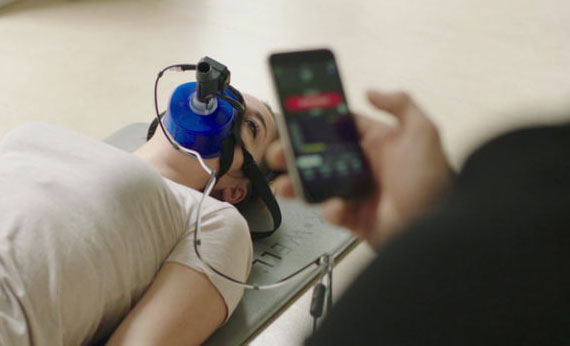Metabolic Gas Analysis



Cardiopulmonary health through obtaining their VO2 peak/max score, a key fitness metric but also a strong indicator of health (VO2 peak is shown to be strongly and inversely associated with general health, longevity, and in particular, coronary heart disease)
– Resting metabolic rate and rate of metabolism to help steer the client’s nutritional goals or weight loss goals through accurately knowing calorie requirements and tracking progress (eg. rate of metabolism will increase with increasing lean muscle mass and calorie requirements will change as body weight decreases)
– Accurate training zones for people who are using watches/heart rate monitors to exercise in particular zones. Using gas analysis to determine your zones is based on your physiology rather than a percentage of your max heart rate. People tend to fall into zone 3 when they think they are training in zone 2, due to inaccurate tests/formulas to determine zones. The consequence of this is failing to acquire the benefits of zone 2, which are very very useful for performance. (increased capillaries and mitochondria)
– Physiological limitations such as discovering that the client is not taking in sufficient volumes of air per breath when working at various intensities (we compare these volumes to the client’s respiratory capacity using spirometry testing prior to the fitness test) or that the client is breathing too many/too little times per minute. Both will cause a drop in performance in their exercise/sport.
Hyperventilation can lead to the metaboreflex, whereby the body prioritizes the overactive diaphragm and moves the majority of blood flow here rather than the working muscles leading to a drop in performance.
Hypoventilation at higher exercise intensities will lead to reduced removal of carbon dioxide, which then sets off a protective cascade led by the brain constricting blood vessels to the legs, reducing blood supply which then causes leg fatigue. I.e a physiological limitation rather than a strength limitation in the legs.
Highlighting inefficiencies at certain exercise intensities: Using VO2/ breathing frequency and VO2/heart rate, the data can show up areas/zones where the client should direct their training to improve efficiency in these areas.
Determine calorie requirements: Using the PNOE over an endurance test (lasting 50mins) will allow us to tell the calorie expenditure and carbs / fat usage at various exercise intensities, very useful info for race day nutrition planning
The resting metabolic rate test is used to determine the proportion of the energy that the client uses at rest coming from carbohydrates and what proportion comes from fat. Knowing this ratio is a vital component in tailored diet and exercise prescriptions for weight loss. It will also give us an accurate calorie intake required for a client’s basic requirements, from which a suitable daily calorie intake can be determined.
People looking to lose weight should have a high proportion of their daily calorie expenditure coming from their fat stores, ie to be efficient at fat oxidation. A 70:30 ratio of fat: to carbohydrates is the goal. This is what leads to successful and lasting weight loss. The diet and exercise plan can be manipulated to cause a higher proportion of calorie expenditure to come from fat stores. Each resting metabolic rate test will take 10mins. Clients can combine this test with a nutrition consultation to complete the picture. If combining this test with a nutrition consultation, you will be asked to record a five-day food diary. The food diary and RMR test results are used during the nutrition consultation to help steer you in the right direction for your desired goal.
People looking to lose weight should have a high proportion of their daily calorie expenditure coming from their fat stores, ie to be efficient at fat oxidation. A 70:30 ratio of fat: to carbohydrates is the goal. This is what leads to successful and lasting weight loss. The diet and exercise plan can be manipulated to cause a higher proportion of calorie expenditure to come from fat stores. Each resting metabolic rate test will take 10mins. Clients can combine this test with a nutrition consultation to complete the picture. If combining this test with a nutrition consultation, you will be asked to record a five-day food diary. The food diary and RMR test results are used during the nutrition consultation to help steer you in the right direction for your desired goal.